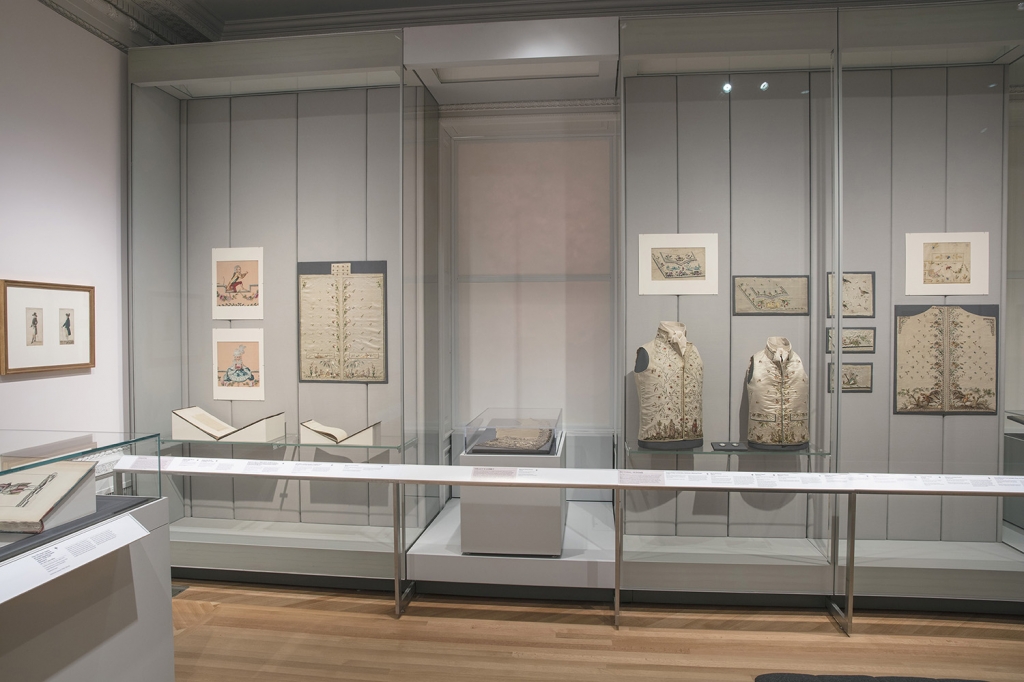Nature by Design: Embroidered and Embellished
A fanciful, romantic, and stylized interpretation of nature embellished men’s waistcoats in 18th-century France. Realistic and exaggerated flowers were the preferred form of decoration and displayed the exceptional skills of France’s embroidery professionals, who employed a painterly approach that required a sophisticated color sense and delicate rendering of light and shadow. A majority of the waistcoats and samples in this gallery were bequeathed to Cooper Hewitt by Richard C. Greenleaf, who assembled one of the most important collections of European textiles and lace in the United States. The waistcoats, along with embroidery samples and their related designs on paper, illustrate the exquisite artistry and craftsmanship that made French design the standard for men’s dress across the royal courts of Europe.
Among the most fashionable piece of clothing for a gentleman of the ancien régime, a white silk waistcoat was the perfect canvas for displaying elaborate floral frameworks. To set the fashion, a gentleman needed dozens, if not hundreds, of waistcoats festooned not only with beautiful flowers, but clever references that sparked conversation. This growing demand for novelty inspired embroidery designers to add animals, insects, romantic vistas, and even cultural and historical references to heighten the whimsy and topicality of their waistcoat designs. The gold and silver thread, sequins, seed pearls, faceted glass, and paste beads helped elevate men’s clothing to a height of elegance and intricacy rarely seen since.
Installation view of “Nature by design: Embroidered and Embellished” at Cooper Hewitt, Smithsonian Design Museum. Photo © Smithsonian Institution
